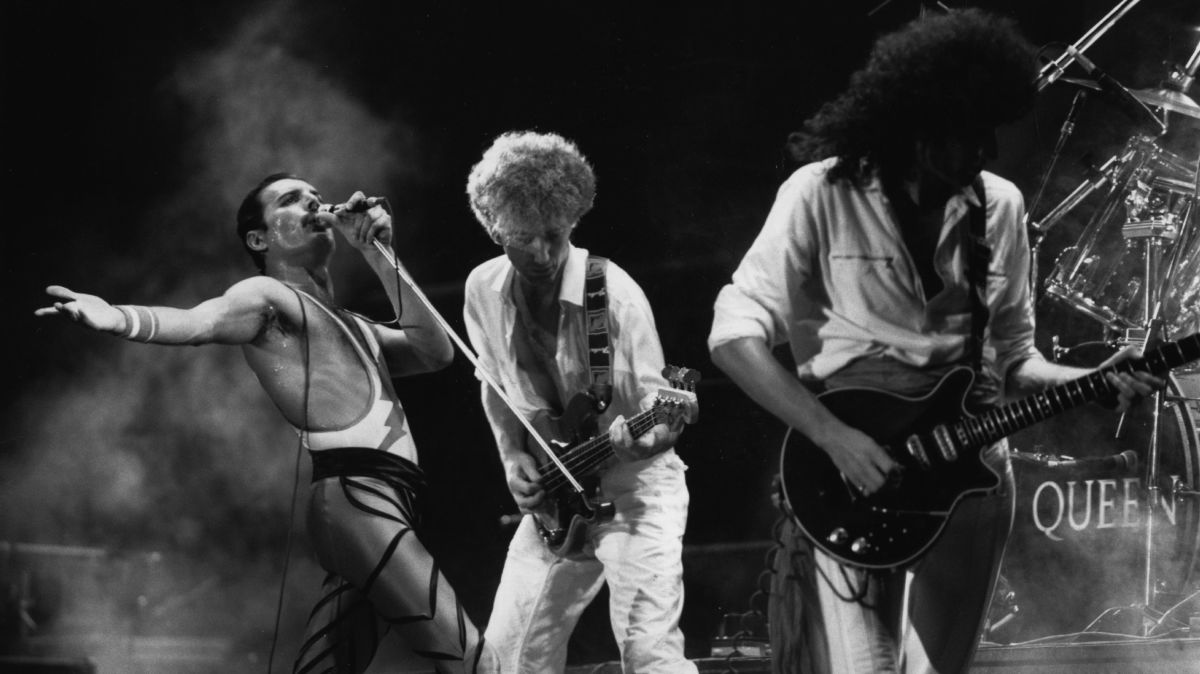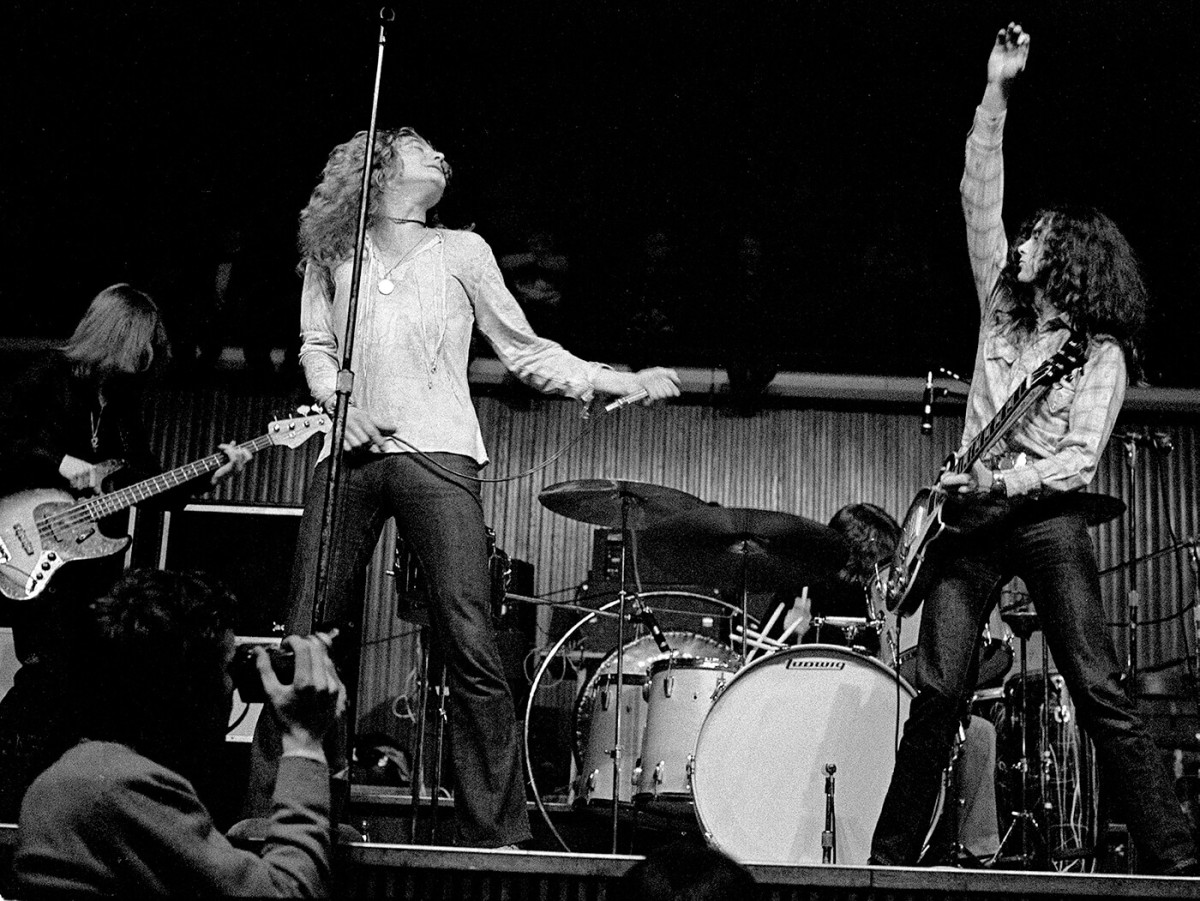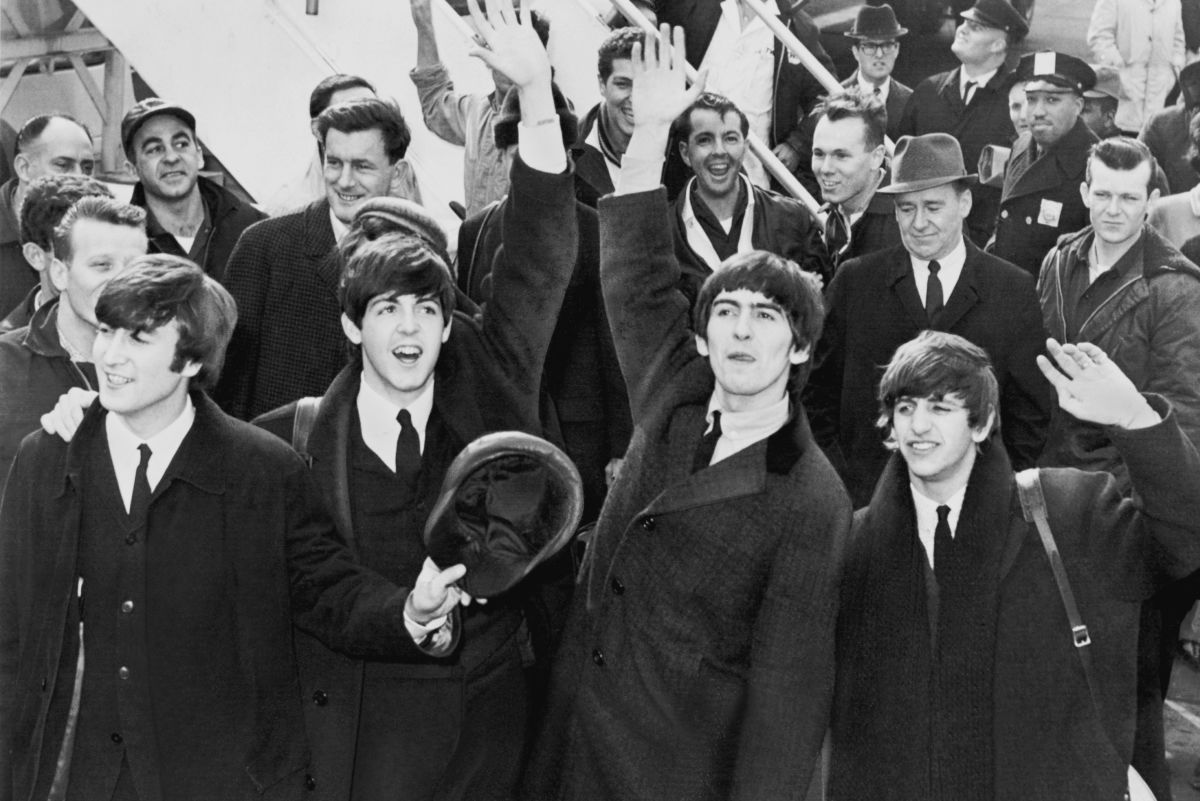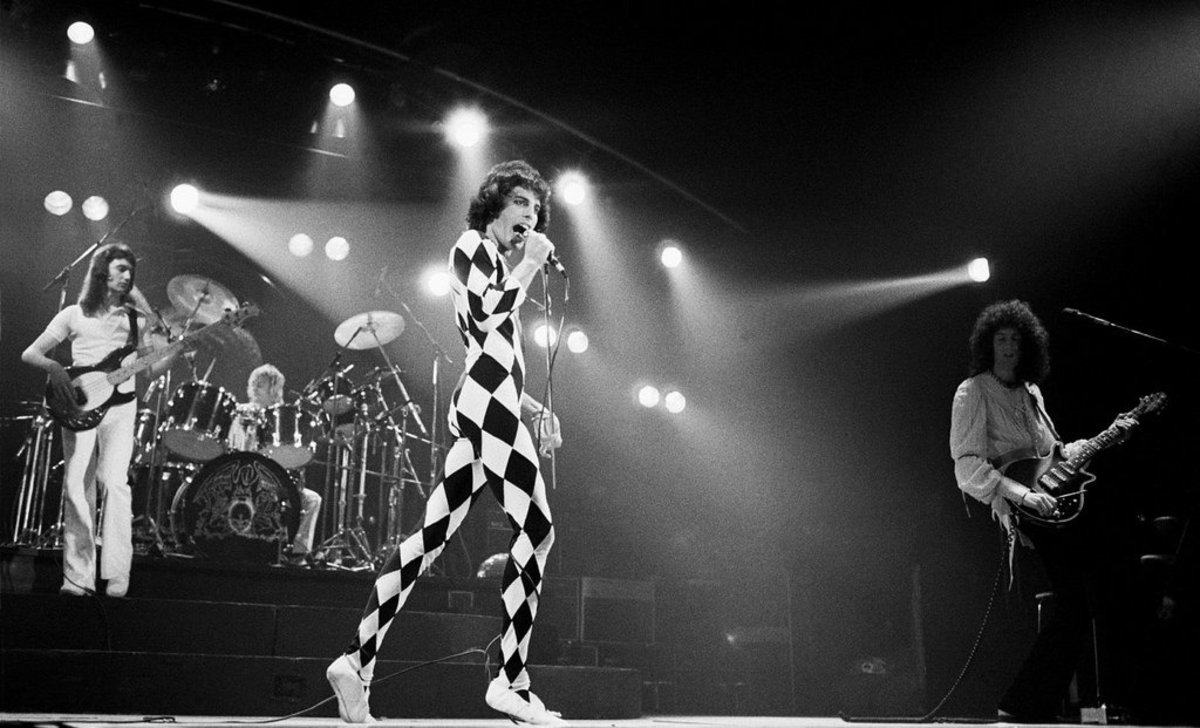Ten Great Rock Albums of 1975

By 1975, rock music had become thoroughly integrated into popular culture. It had been five years since the breakup of the Beatles in early 1970. Many different rock musicians had continued the evolution of rock music, including the four former Beatles as solo artists.
This evolution reached a level of maturity in 1975 that produced many classic rock albums. Much of this music was produced by musicians who had risen to fame in the 1960s. They now faced the challenges of:
- Continuing their work in a world of changing sounds and expectations.
- Reflecting their adult experiences in music that was basically aimed towards young people.
These albums also were recorded by younger musicians who had started in the 1970s, and who were absorbing many influences in their attempt to create their own sound and identity.
Meanwhile, the seeds of change were slowly taking root, and would soon bloom into new rock styles like punk, new wave, and disco.
On a personal note, these albums were released the year that I turned 16 and started the transition to young adulthood. They made a strong impression on me in 1975, and continue to impress me today, when I can appreciate them even more than I did then.
The following list of albums is in the approximate order of release:
Blood on the Tracks, by Bob Dylan
Bob Dylan's music has always been intensely personal and political. Many people have paid close attention to him to see what he was going to say next. For decades, he has helped people articulate their thoughts and feelings about their own lives and the world around them.
By 1975, Dylan was about 10 years past his 1960s peak when he was churning out such classics as "Blowin' in the Wind" and "The Times They Are a-Changin'." His work in the early 1970s had received some criticism, but the release of Blood on the Tracks in early 1975 was met with almost unanimous praise.
"Bob Dylan has returned to the musical wars with his best album in the last five years," wrote Bob Talbert in the Detroit Free Press on February 2, 1975. "It's not the Dylan of the mid-60's singing about the changes of a people, a nation, a world. It's Dylan the seer, a matured prophet."
"Bob Dylan's back from the land of nowhere and operating once more as poet laureate of the rock and roll scene," commented Jim Knippenberg in the January 26, 1975 edition of The Cincinnati Enquirer.
The album starts off with "Tangled Up in Blue." Its medium tempo, friendly groove, and lyrical story help it build up to the kind of statement that people had come to expect from Dylan: "The only thing I knew how to do was to keep on keepin' on."
From there, the user is taken on a compelling, almost hypnotic, journey through Dylan's special art. His voice has warmth and intimacy, as well as a human coarseness that critics said he had unwisely abandoned on recent albums.
For fans of the intricate, complex wordplay of Dylan's 1960s music, he provided the long "Lily, Rosemary, and the Jack of Hearts," which got a lot of airplay on the FM rock station that I listed to in Indianapolis (WNAP).
The descriptive song titles included catchphrases that helped the album stick in people's memories, including "Simple Twist of Fate," "Shelter from the Storm," "Tangled Up in Blue," and "Idiot Wind."
Blood on the Tracks has a production texture that people were used to in the 1970s—warm overlay of the bass guitar, and separation in the mix with each instrument clearly defined. Dylan had taken particular care with this album, with a recording session in September 1974 with one band, followed by a re-recording of several of tracks in a December 1974 session with another band.
The front and back covers of the album contributed to its appeal, in an era when browsing at the album cover in a record store was part of consumer market research.
The front cover has a mysterious, shadow-like profile. The back cover has a long essay by journalist Pete Hamill that attempted to describe Dylan's place in pop culture, using the same kind of intense, mysterious language that has made Dylan famous.
All of these elements combined to make Blood on the Tracks both a critically acclaimed album and a Number One album on the Billboard magazine music charts (Detroit Free Press, March 2, 1975).
Physical Graffiti, by Led Zeppelin
Led Zeppelin's previous album Houses of the Holy had disappointed many fans and critics, especially after the fourth album produced such classics as "Stairway to Heaven," "Rock and Roll," and "Black Dog."
But the release of the two-record Physical Graffiti in early 1975 helped restore Led Zeppelin's reputation. The 15 songs had a range of styles that pleased critics, who in general wrote favorably about the album.
"Old fans can find many traces of the sound they love, but there is little looking back in this album," wrote Al Rudis of the Chicago Sun-Times in a syndicated article that appeared in the Kingsport (Tennessee) Times-News on March 9, 1975. "In fact, if you played most of the numbers on the album's second half first, you might have a tough time identifying the band."
"There's so much good music in 'Physical Graffiti' that my favorite song will probably change with repeated listenings," commented Jack Garner in the March 12, 1975 edition of the Democrat and Chronicle of Rochester, New York.
The album showed the sonic potential of hard rock and heavy metal through lead guitarist Jimmy Page's production. The end of "The Rover" is a good example, with the aggressively intertwining sounds of guitar, vocals, and drums before the guitar emerges as the dominant instrument.
"Kashmir," which received a lot of airplay on FM rock stations, was particularly interesting. It applied a lushly produced hard rock sound to a stately, medium tempo song with intriguing lyrics.
The wailing sound of lead singer Robert Plant's voice continued its role as a unique musical instrument, and not just as a transmitter of words.
"Ten Years Gone" is a highlight of the album, with its plaintive handling of hard rock textures. The verses have a very poignant feeling, leading to a heartfelt instrumental break that in turn leads to the emotionally powerful singing of Plant that starts with, "Do you ever really need somebody, really need'em bad?"
Physical Graffiti was one of the best double albums of the LP era, with each side standing on its own. The LP packaging was creative, with window-like openings on the front cover showing different images, depending on how the inner sleeves were inserted into the outer sleeve.
Katy Lied, by Steely Dan
Katy Lied has a solid jazz-pop groove, but pop music underscores everything, with sparkling melodies throughout the album.
Pop-oriented listeners can easily pick up on the jazz elements of the music, including the swinging rhythm and the special space for instrumental solos, particularly the guitar.
The most jazz-oriented songs are "Doctor Wu," with its seductive saxophone solo, and "Your Gold Teeth II," with its swirling introduction that leads into drum-focused jazz stylings.
Steely Dan had become a studio band, with carefully selected musicians backing up guitarist Walter Becker and singer Donald Fagen, who wrote all of the songs.
"Fagen and Becker continue to refine their harmonic, jazzy sound, experimenting with synthesizer, bells, vibes and various electronic keyboards and apparatus," wrote David Rankin in the Washington Courthouse (Ohio) Record-Herald on May 1, 1975. "Plenty of room is given to instrumental soloing while Fagen's vocals are getting better, having improved over the thin, raspy voice he displayed on earlier recordings."
The high level of talent on Katy Lied produced many wonderful moments of music, particularly by Michael Omartian on piano. Much of the drumming is provided by Jeff Porcaro, who later helped start the group Toto. The skillfully functional guitar solos are provided by such well known artists as Rick Derringer and Larry Carlton.
Katy Lied helped introduce singer Michael McDonald to listeners, and he contributes some beautiful background singing to the album. Hearing him now on Katy Lied, after many years of hearing him as a lead singer, makes Katy Lied sound even better, bursting with so much musical talent that a lead-quality vocalist had to sing in the background.
The lyrics, as always with Steely Dan, are quirky and abstract, and sometimes confused critics and listeners who were used to more straightforward lyrics.
But it helps to take the lyrics on their own terms, and see them in part as the semi-articulate phrasings of someone who tries to make sense out of the world by seeing it in a nonsensical, Jabberwocky way. They are almost an admission that you can't fully explain or understand everything.
Or maybe Becker and Fagen just wanted to mess with your mind. The lyrics often feel more meaningful when they are sung in the plaintive, human style of Fagen.
But when the lyrics are more straightforward, they can be extremely powerful. "Any World (That I'm Welcome To)" is a highlight of the album, and articulates the misfit feelings of loneliness that many people experience.
I have to give special mention to the upbeat opening track of the album, "Black Friday," which runs through my head every November when Black Friday sales start after Thanksgiving in the United States.
Captain Fantastic and the Brown Dirt Cowboy, by Elton John
Captain Fantastic was an autobiographical album that many saw as a significant stage in the careers of Elton John and his songwriting partner Bernie Taupin. Many also saw it as a definite improvement on his previous album Caribou. The album quickly jumped to the top of the Billboard magazine album chart (The Post-Crescent (Appleton, Wisconsin), June 4, 1975).
"The album is a lyrically introspective work, as Taupin relates with piercing, haunting style the story of his and John's earliest days as struggling songwriters," wrote Bruce Westbrook in the June 15, 1975 edition of the Waco (Texas) Tribune-Herald. "In an often plaintive and sorrowful tone, we're told of the agonies experienced by such musicians with reconciling the creative fire of their musical obsessions with the realities of fashioning an existence within a heartless and exploitative music industry."
Much of the autobiographical focus of the album is in the title track which opens the album. The quiet melody of the solo guitar that begins the song has a subdued, introspective manner that still hooks you with another one of Elton John's carefully crafted melodies.
You're then hooked by the narrative of the song, as you follow John and Taupin through their early years. About thirty years later, John and Taupin released a sequel to this album titled The Captain & the Kid.
Another song that strongly supports the autobiographical concept is "Bitter Fingers," a musical highlight of the album that describes the challenges of songwriting. It starts with a compelling, ethereal piano melody, followed by a delicately sung verse, and then is punched home by a powerful chorus.
This album produced only one lasting single ("Someone Saved My Life Tonight"). But John maintained his presence on the singles charts in 1975 with a remake of The Beatles's "Lucy in the Sky with Diamonds" and the new song "Philadelphia Freedom." Later in the year, he released more singles from his album Rock of the Westies.
But many solid songs wait to be discovered on Captain Fantastic, including the wistful "Tell Me When the Whistle Blows," the bouncy "(Gotta Get a) Meal Ticket," and the friendly "Writing." The album ends on a solemnly poignant note with the songs "We All Fall in Love Sometimes" and "Curtains," which are similar to the dramatically powerful songs that John started singing in the 1990s.
The feeling that Captain Fantastic marked a turning point was re-enforced when John changed bands after Captain Fantastic, resulting in a more rock-oriented sound on Rock of the Westies. The Captain Fantastic band had backed up John throughout his hit-making years of the early 1970s. This band later re-united in the 1980s for Too Low for Zero, which was one of John's most successful albums of that decade.
Fleetwood Mac, by Fleetwood Mac
Many albums are a long time in preparation and then, with some luck, have a short period of success. With Fleetwood Mac, the opposite was true.
The band that created this album in the first half of 1975 had been quickly formed after the departure of guitarist Bob Welch in late 1974. Fleetwood Mac gradually grew in popularity and topped the Billboard and Record World album charts more than a year after it was released (Independent (Long Beach, California), August 31, 1976).
The new lineup that recorded Fleetwood Mac included two founding members of Fleetwood Mac (Mick Fleetwood and John McVie); Fleetwood Mac veteran Christine McVie; and newcomers Lindsey Buckingham and Stevie Nicks. Buckingham and Nicks had recorded a 1973 album that helped them get the attention of the other members of Fleetwood Mac.
The album is one of the best examples of talent and chemistry finding each other, transforming a moderately successful blues pop group into a hugely successful pop rock band. The album still has a fresh sound that reveals both a band and individual singers finding their commercial voices.
When you listen to Fleetwood Mac today, it almost sounds like a greatest hits album, with one amazing song after another. The core of the album is so good that the last three songs suffer by comparison, even though they are solid tunes that would have been significant contributions to most other albums ("World Turning," "Sugar Daddy," and "I'm So Afraid").
Fleetwood Mac has a more personal feeling than its phenomenally successful followup album Rumours, especially with songs like "Crystal," "Landslide," and "Over My Head." The music had a country rock sound that was popular in current music by the Eagles and Linda Ronstadt.
"Fleetwood Mac, in its latest reincarnation, features a format ranging from extremely pleasant but not particularly memorable soft-rock to moments of pure magic," commented Pam Simon in the Statesville (North Carolina) Record And Landmark on August 2, 1975. Later in the review, Simon wrote, "As a whole, however, this is a beautiful album. Fleetwood Mac, despite many changes, has managed to make the transition from the 60s to the 70s, and the passage of years has served to enrich their music."
On the LP version of the album, the opening songs on each side jump out of the speakers in a way that grabs the listener.
The driving country rock of Lindsey Buckingham's "Monday Morning" opens the album with some energetic guitar work. On Side Two, the sharp and bouncy sound of a piano launches Christine McVie's "Say You Love Me," one of several best-selling singles from the album, along with "Rhiannon" and "Over My Head."
The group toured extensively to promote the album, adapting well to the band's older songs that predated Buckingham and Nicks. Singles from Fleetwood Mac were gradually released through late 1975 and early 1976. The consistent strength of the music throughout the album makes you wonder how this album would have been marketed during the MTV, YouTube, and download eras.
Born to Run, by Bruce Springsteen
When Born to Run was released, it had to compete with Springsteen's great reputation as a live performer, and the incredible hype that helped land him on the covers of Time and Newsweek magazines in the fall of 1975.
In the August 15, 1975 edition of the Asbury (New Jersey) Press—the newspaper of the city that Springsteen helped make famous—reporter Marty Packin wrote about Springsteen's five-night appearance at the Bottom Line nightclub in New York City:
On into the wee hours of Thursday, the frenzy continues. The stage show doesn't come across on a record. Springsteen has to be seen live to be appreciated. This could account for those premature predictions of superstardom.
And so it goes. From Little Eden to the Big Apple. From the streets of Freehold and Asbury Park to Greenwich Village. Another story in the Naked City.
The Springsteen phenomenon of 1975 was the perfect example of a culture's continuous desire to have something new emerge in an art form, something that topped everything that came before it.
Rock was still relatively young. Many people remembered the excitement of Elvis Presley in the middle 1950s and the excitement of The Beatles in the middle 1960s, and wondered if Springsteen would continue what looked like a continuous 10-year cycle of renewal.
"His music is the culmination of the 20-year tradition of rock and roll," wrote Dave Marsh of Rolling Stone magazine in a review of Born to Run in a syndicated article in The Courier-Journal of Louisville, Kentucky on September 4, 1975. "He has explored every lonesome cul de sac in the history of the music and winnowed the best."
The music of Born to Run has an epic feeling, not only in its lyrics, but also in its arrangements and production, which prompted comparisons to the orchestral pop sound of the Phil Spector-produced records of the early 1960s.
"The music seems to blast from the vinyl grooves and overwhelm the listener with its urgency and presence," wrote Al Rudis of the Chicago Sun-Times in a syndicated article that appeared in the Kingsport (Tennessee) Times-News on September 14, 1975.
Springsteen had developed a reputation as a rock poet, similar to Bob Dylan, but with more of a working class, rock-oriented style. Springsteen also had a reputation as a storyteller, and prompted comparisons to writers like John Steinbeck.
The opening lines to the opening song on the album ("Thunder Road") immediately re-enforce this image: "The screen door slams, Mary's dress waves. Like a vision she dances across the floor as the radio plays..."
The title track of the album is the centerpiece of the album, and has probably been played more often on the radio than any of his other songs.
Highlights of the song "Born to Run" include the thunderous drums, the multi-tracked guitar, and the vocal riding recklessly on top of the energetic musical accompaniment. Then there is the emotional release of the final singing of the memorable title, which probably has a unique meaning for everyone who has heard it.
Prisoner in Disguise, by Linda Ronstadt
Linda Ronstadt enjoyed a critically and commercially successful album in 1974 with Heart Like a Wheel, with the hit singles "You're No Good" and "When Will I be Loved."
With Prisoner in Disguise, critics were divided in their comments. Some wondered why it didn't sound as good as Heart Like a Wheel, while others tried to take it on its own terms and look for signs of growth in Ronstadt's artistry.
" 'Prisoner in Disguise is so carefully patterned after Ronstadt's enormously successful 'Heart Like a Wheel' that comparison is unavoidable," wrote Dave Marsh of Rolling Stone magazine in an article in the News-Journal of Mansfield, Ohio on October 9, 1975. "Unfortunately, while every selection on the previous album seemed inspired, these are largely pedestrian."
"Ronstadt has cultured her knack for selecting tunes adaptable to her style and succeeds admirably on this collection," wrote Bruce Meyer of the United Press International in the October 25, 1975 edition of The Times of San Mateo, California. "The songs on 'Prisoner in Disguise' range from a strongly countrified version of James Taylor's 'Hey Mister, That's Me Up On The Jukebox' (far better than the original) to a tasty cover of Smokey Robinson's 'Tracks of My Tears'."
Listening to it in the early 21st century, Prisoner in Disguise is a solid mixture of pop and country tunes that has more in common with the country stylings of Ronstadt's earlier work than it does with the more pop-rock textures of her later work. You do hear some hints of the late 1970s music, especially in songs like "Roll Um Easy," but overall the album has a quieter tone than Simple Dreams of 1977 or Living in the USA of 1978.
Ronstadt and her producer Peter Asher gathered a solid collection of studio musicians to back her up. One of the band's high points is the jangling, bouncy beat on "Heat Wave." The male background singers provide the same kind of supportive admiration for Ronstadt as the male dancers of 1950s movie musicals who danced behind performers like Jane Russell and Rosemary Clooney.
Another strength of the album is the relative softness of Ronstadt's voice. Very rarely does she try to show off the loudness of her voice, which she did more often in the late 1970s.
A highlight of the album is a rendition of Dolly Parton's "I Will Always Love You," which is more restrained and tender than the dramatic Whitney Houston version that has become so famous. Ronstadt also teams up with another one of her musical sisters (Emmylou Harris) on "The Sweetest Gift."
Another highlight is "You Tell Me That I'm Falling Down," with its friendly melody, informal singing style, delicate country instrumentation, and lovely harmonizing with Maria Muldaur. Ronstadt also duets beautifully with J. D. Souther on two songs that he wrote ("Prisoner in Disguise" and "Silver Blue").
Face the Music, by Electric Light Orchestra
The Electric Light Orchestra had a significant critical and commercial breakthrough in 1974 with the album Eldorado, which included the single "Can't Get It Out of My Head." Some critics compared that album to the "I Am the Walrus" period of The Beatles.
Some critics felt Face the Music was inferior to Eldorado, but other critics praised the new album.
"Inside Face the Music, ELO's resident genius, Jeff Lynne, manages to twist, warp, totally dominate any note in any song anytime," wrote Newspaper Enterprise Association writer Stephen Ford in a syndicated article that appeared on December 30, 1975 in The Columbus (Indiana) Herald. Ford also called Lynne a "musician's musician" who had a special "sensitivity for words and music."
Face the Music further revealed Lynne's melodic talents, which would continue to flower on ELO's next two albums, A New World Record and Out of the Blue. "Strange Magic" and "Evil Woman" might be ELO's most enduring singles.
On Face the Music, the band continued their special ability to add classical textures to a pop sound. The classical music transitions between songs are especially moving and add a sophisticated feeling to the listening experience. The synthesizer is also put to good use, enhancing and complementing the other instruments.
"With two cellists and a violinist among the seven regular members, ELO is unique for a rock group," wrote Tom Uhlenbrock in his review of Face the Music in the November 5, 1975 edition of the St. Louis Post-Dispatch. "One moment it's a bit of the old Ludwig Von and the next rock'n'roll."
"Poker" mixes the classical and pop sides of ELO as well as any song on the album. It uses rock and classical instruments to build up to a grand finale that includes dramatic choral and orchestral accompaniment.
Another song that mixes styles skillfully is the dramatic instrumental "Fire On High," which has gotten a lot of airplay on album-oriented FM stations.
ELO posed a dilemma from critics, who saw them as a talented group of serious musicians with a unique style, but not as culturally significant as other rock artists who released albums in 1975 like Bob Dylan, Bruce Springsteen, and The Who.
But listening to Face the Music now, you can recognize ELO's unique abilities and sincere efforts to be innovative on an enduring and entertaining batch of pop rock songs. This album also has a sharply produced sound that is missing on later albums, when Lynne went for a more streamlined, atmospheric sound that often sounds muddy.
Siren, by Roxy Music
Roxy Music's songs have been described by many critics as art rock, which covers several parts of the group's image. The music incorporated different influences, including electronic music, lounge singing, classical textures, and traditional rock and roll.
Pictures of the band seem to show more than just a collection of images. They also show a group of individuals of different lifestyles who used a musical group to work together to funnel their talents and styles into something unique, mainly through bandleader Bryan Ferry.
"Ferry is a visual and vocal description of the group's ideas, from his affectedly dissolute singing style to his mock-elegant stage attire," wrote Rolling Stone's Dave Marsh in a syndicated review of Siren that appeared in the News-Journal of Mansfield, Ohio on December 11, 1975. "Roxy Music is obsessed with the interplay of styles; form and posture fascinate the players, and they are Ferry's principal lyric material."
Critics also were fond of the word "decadent" when describing Roxy Music, but Siren has more of a sense of weary, wistful romanticism than it does decadence.
"This is the fifth album from this rather strange and complex band," wrote Jack Garner of the Gannett News Service in the March 28, 1976 edition of The San Bernardino (California) County Sun. "The music somehow bridges the gap between basic rock, combo jazz, and the decadent sounds of the Bowie-Reed school. One nice difference is the use of Andrew Mackay's oboe and saxophone playing."
Siren was Roxy Music's most commercial album. It had a very tight, pop-oriented sound that did not drift off into the mysterious areas of its previous music. It also had those masterful textures that constantly make a listener think about the different instruments that are creating such wonderful sounds.
Siren includes several breathtaking musical passages. These include the guitar solo in "Whirlwind" and the last part of "Nightingale," where strings and woodwinds are mixed in with more traditional rock instruments. Paul Thompson's drumming added much snap, tension, and drive to the music.
The album includes a masterful use of atmospherics, particularly in "Both Ends Burning" and "Sentimental Fool." The intriguing lyrics include clever wordplay, and some of the lyrics seem to be intentionally muddled, which adds to their mystique.
The album cover of Siren contributed to the strange appeal of the group. An oddly dressed woman (model Jerry Hall) is crawling over rocks near an ocean, with the photograph bathed in a subtle shade of blue.
Zuma, by Neil Young
Zuma was cited by many critics as a return to the quality of Neil Young's best work, including the albums After the Gold Rush (1970) and Harvest (1972). Zuma has a strong live sound, thanks to the crisp production; Young's informal style of guitar playing; and the aggressive but supportive work of the backup band Crazy Horse.
Young's guitar playing is very expressive, and complements the whining tone of Young's voice. The separation in the production helps give expression to even randomly stray notes from Young's guitar, particularly on long, wandering songs like "Danger Bird" and "Cortez the Killer."
"Young's disk, 'Zuma,' amounts to a return to his brand of twanging, open-fifths, inexorably simple rock after some musically sparser albums," wrote John Rockwell of the New York Times News Service in the December 11, 1975 edition of The Courier-Journal of Louisville, Kentucky. "This is really 'head music' in the old-fashioned 1960s sense—plodding and bleary, with insights popping into one's consciousness like bubbles in sludge. And yet it grows on one, and powerfully."
The breadth of Young's musical talent is always amazing. He can rock as hard as any other musician, but still write tender songs like "Pardon My Heart" and "Through My Sails" or melodic miniatures like "Don't Cry No Tears" or "Lookin' for a Love."
The personal nature of his music is also a big part of his appeal. You always get the feeling that he is sharing his whole life with listeners, and that he can articulate thoughts and feelings of listeners in ways that they can't.
Contemporary reviews of Zuma were often packaged with reviews of Joni Mitchell's latest album, The Hissing of Summer Lawns (her first studio album since the successful Court and Spark album).
Both musicians were from Canada, both had settled into the California music scene, both brought a singer/songwriter sensibility to their music, and both had roots in the music scene of the late 1960s. Critics could compare and contrast them, helping readers see unique things in each musician, as well as their shared strengths.
Zuma was Young's second album of 1975, following the equally acclaimed Tonight's the Night, which had a much darker tone than Zuma.
"Young's tortured 'Tonight's the Night' and 'Zuma' were studies in opposites, although both had their fair measure of despair," wrote Rolling Stone's Dave Marsh in a year-end review of music that appeared in the January 8, 1976 edition of the News-Journal of Mansfield, Ohio. " 'Zuma' offered a little hope, 'Tonight's the Night' not even the solace of a properly tuned guitar. Although neither has sold well, both are rock classics."
Other Significant Rock Albums of 1975
These new albums of 1975 also made a big impact on listeners and critics:
- Between the Lines (Janis Ian), with "At Seventeen"
- Equinox (Styx), with "Lorelei"
- Honey (Ohio Players), with "Love Rollercoaster"
- Horses (Patti Smith), an early punk rock album
- The Hungry Years (Neil Sedaka), with "Bad Blood"
- KC and the Sunshine Band (KC and the Sunshine Band), with "That's the Way (I Like It)"
- Love Will Keep Us Together (Captain & Tennille), with its big-selling title song
- A Night at the Opera (Queen), with "Bohemian Rhapsody"
- One of These Nights (Eagles), with "Lyin' Eyes"
- The Original Soundtrack (10cc), with "I'm Not in Love"
- Pick of the Litter (The Spinners), with "Games People Play"
- Red Octopus (Jefferson Starship), with "Miracles"
- Still Crazy After All These Years (Paul Simon), with "50 Ways to Leave Your Lover"
- Ted Nugent (Ted Nugent), with "Stranglehold"
- That's the Way of the World (Earth, Wind & Fire), with "Shining Star"
- Toys in the Attic (Aerosmith), with "Walk This Way"
- Venus and Mars (Paul McCartney and Wings), with "Listen to What the Man Said"
- The Who By Numbers (The Who), with "Slip Kid"
- Windsong (John Denver), with "I'm Sorry"
- Wish You Were Here (Pink Floyd), the followup to Dark Side of the Moon
- Young Americans (David Bowie), with "Fame"








